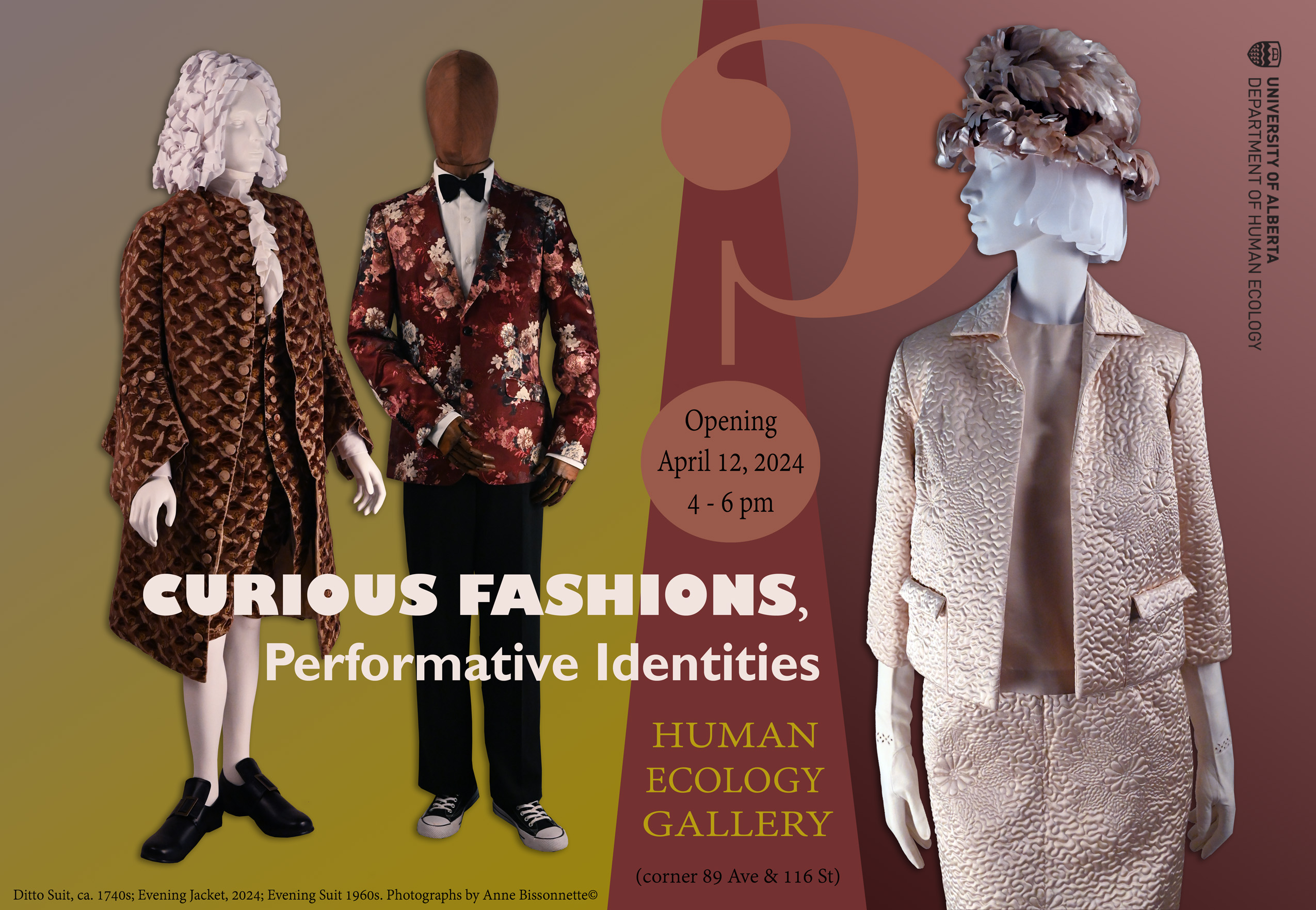
April 12, 2024 - October 22, 2024 (extended from October 11)
Curators
Isabelle Arden, Alexis Billiones, Anne Bissonnette, PhD, Janna Ehrenholz, Olivia Nash, Lola Oberhagemann, and Madison Silva co-curators
Curious Fashions, Performative Identities
*
Have you ever worn a hat covered in flowers? It could be eccentric to do so today yet head coverings were once considered necessary and doing without was deemed improper. We may look back on past fashions like 18th-century wigs with bewilderment. English barristers look puzzling with these wigs now but such objects were once an essential part of a gentleman’s wardrobe or a man’s occupation.[1] Dress echoes cultural conventions, which are rarely static. Clothing is a way to reflect who we are or would like to be, what we do, and what we value.
The masculine identity was once displayed through vibrant and fanciful attire. Expensive fabrics, such as a suit of cut and uncut velvet, implied high status. Even when subdued masculinity emerged, whimsical dressing gowns worn with pointed-toed red slippers (often steeped in Orientalism) continued a practice rooted in a culture of gentility. While this decorative approach lives on , dressing gowns no longer symbolize a man’s privileged position of leisure and his ability to pursue creative and intellectual pastimes at home. [2] Floral and other decorative motifs have also blossomed in Indigenous and Metis apparel. These showcase artistic creativity and can help to establish group membership. [3] In a similar way, Alberta’s cowboy culture has adopted some of this Indigenous imagery and continues to bring forth remarkable attire that can also signal peer affiliation to a community.
The way we dress is constantly evolving, yet also linked to the past. Our choices are based on numerous factors, such as dominant styles, societal norms, available goods, and personal preferences. These factors influence how we present ourselves and begin to reveal our identities in various contexts. Our present customs could shock someone from the past. What does your grandmother think of yoga pants for school? With evolving aesthetics and a changing material world, previous sartorial conventions seem curious to us today. On a summer day, would you feel obliged to wear a hat and gloves to call upon a friend as your ancestors have?
Isabelle Arden
Alexis Billiones
Anne Bissonnette, PhD
Janna Ehrenholz
Olivia Nash
Lola Oberhagemann
Madison Silva
[1] Michael Kwass, “Big Hair: A Wig History of Consumption in Eighteenth-Century France,” The American Historical Review 111, no. 3 (2006): 634, 637, https://doi.org/10.1086/ahr.111.3.631.
[2] Susan North, “Indian Gowns and Banyans ─ New Evidence and Perspectives,” Costume 54, no. 1 (2020): 33, 45, 49, https://doi.org/10.3366/cost.2020.0142.
[3] Sherry Racette, “Sewing Ourselves Together: Clothing, Decorative Arts and the Expression of Metis and Half Breed Identity” (PhD Dissertation, University of Manitoba, 2004), 2, https://mspace.lib.umanitoba.ca/xmlui/handle/1993/3304.
